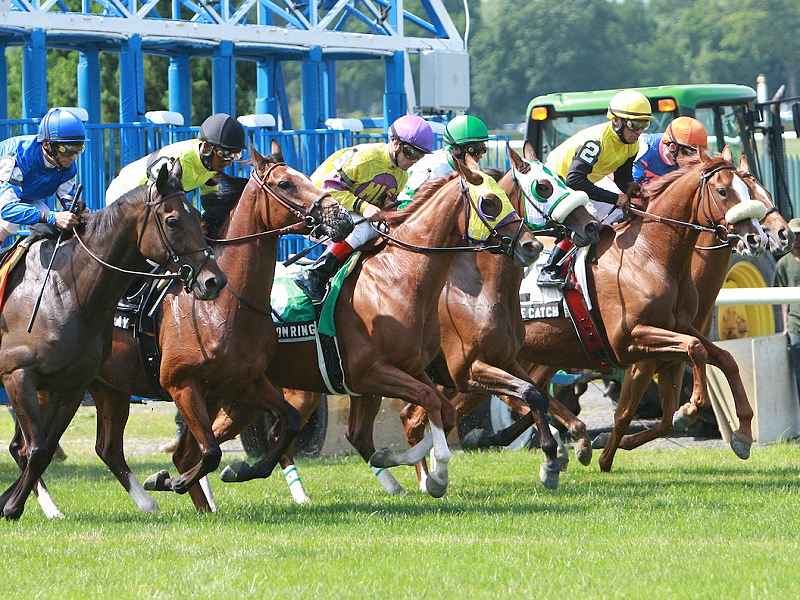by Brian Nadeau
September 8, 2017

Another summer in Saratoga has passed us by, and with it come the opening of Belmont Park’s Fall Championship Meet. While moving just three hours downstate may not seem like a big deal, there’s a big difference between the two meets. So, with that being said, here’s a brief synopsis of what I’ll be looking for when Big Sandy opens Friday.
First and foremost, I’ll be looking for barns that either crushed it at Saratoga, or struggled at the Spa, as there’s a good chance they go through a reversal of fortunes at Belmont. Typically, when a barn has a strong meet, they will struggle when racing shifts venues, as a lot of their horses simply run out of conditions and have to rise in class, and therefore take on a better caliber of opponent. But this also works both ways, as barns that struggle get to run back at the same level, while missing those who have vanquished them over the past few starts.
At Saratoga, sharp trainers Brian Lynch and Gary Gullo didn’t have their usual bang-up meets, but I expect them to flex their muscles at Belmont, so I’ll be looking for a reversal of fortune. Even though he did win his fair shar at the Spa, Rudy Rodriguez fits in this category too, and I think Belmont is much more tiered to his training model.
Conversely, I’m going to play against Danny Gargan at Belmont, as he really had a stellar Saratoga and could be poised for a rough stretch in Elmont. Gargan typically struggles at the Spa, but he won races in droves this year, at all sorts of levels, so I’m wondering if just maybe he squeezed a little too much juice out of the lemon. I’m also going to try and Jason Servis, which may seem suicidal, but he too won way more than he’s used to upstate, and I just have to believe he emptied the cupboard to have a good meet, which could negatively impact him at Belmont.
I’m also going to look for horses exiting 1 1/8-mile main track races, as they will now be going one-turn at Belmont and should have plenty of foundation under them, especially if they are catching stretch out sprinters. The two-turn routes at Saratoga are very demanding, and can give a horse plenty of foundation, which is needed when you’re going an elongated one-turn at Belmont. This is a big hidden handicapping angle, since a lot of times people simply think a sprint is a spring and a route is a route. But at Belmont, that’s hardly the case. So, give an extra look to anyone coming out of a Saratoga main track route, especially if they have speed, regardless of how they fared, as they may stick around a lot longer that you think at Belmont.
Lastly, the 2yos that speed-popped the field at Saratoga because they were cranked up and more precocious than their rivals, or those who ran big at first-asking because their connections wanted to win right away, are really up against it at Belmont. I’ll be giving a lot of added attention to the late-running types in the Spa maiden races, as the 5 ½-7 furlongs they got was simply too short for them, not to mention a lot of them really weren’t trying to win. Well, the one-turn mile or 1 1/16-mile will be right up their alleys, and they’ll be getting all the best of it, while those amped up sprinters will come up wanting and then some.
It’s just three hours and a few hundred miles, and most of the horses are the same, but the differences between Saratoga and Belmont are seismic. By knowing them, and what to look for, you’ll get a big leg up on your betting rivals.